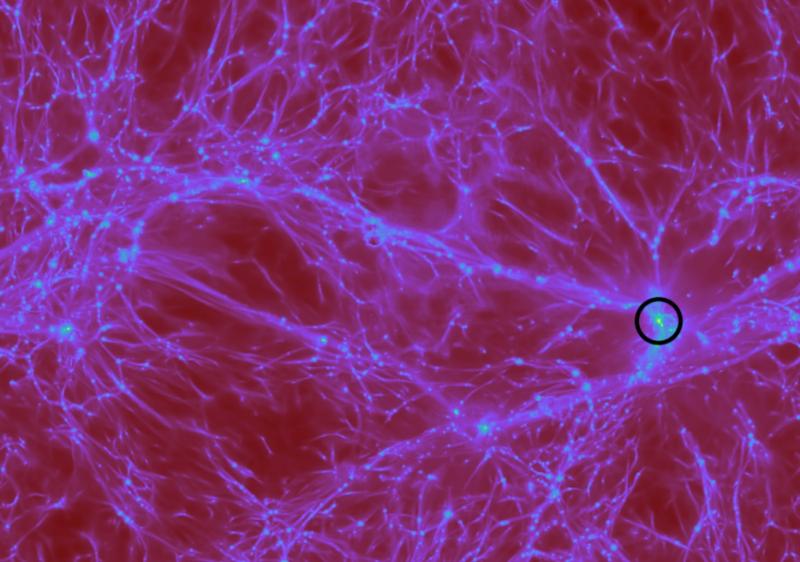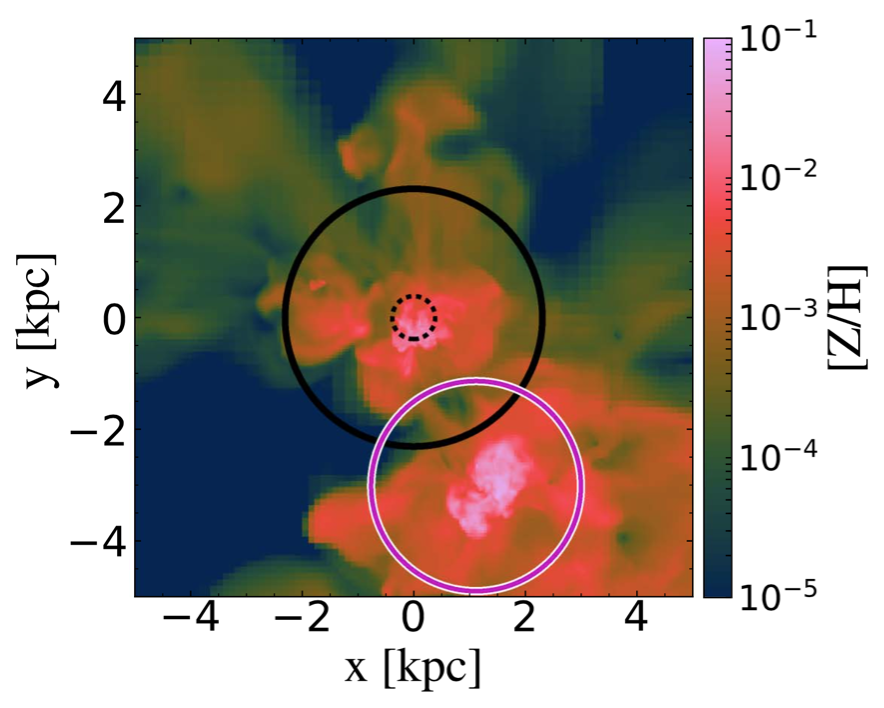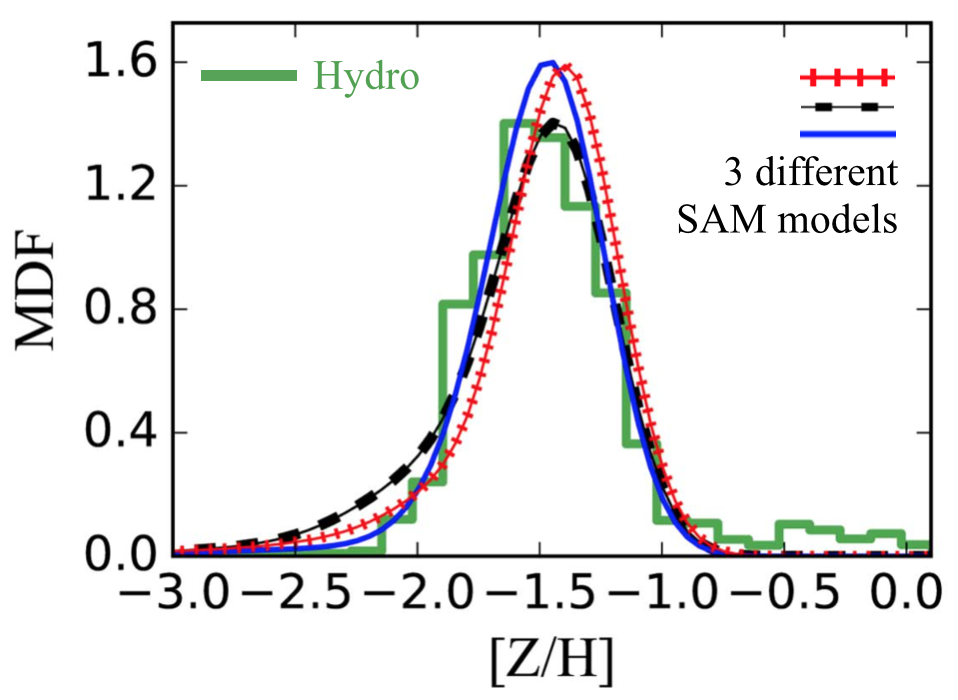Data
You will be redirected to cenamweb.org in 15 second(s). The JINA-CEE website is not updated anymore. The archived website can still be reached through the CeNAM website.
Cosmological Structure Formation and Chemical Evolution in the Early Universe

Old, low-mass, and metal-poor stars in the halo of the Milky Way and in nearby dwarf and ultra-faint galaxies contain on their surface the chemical signatures of the first stars that lived and died in the early Universe. To best interpret those signatures, connections must be made between the fields of nuclear astrophysics and galaxy formation. While the former plays a key role in determining the nucleosynthesis within the first stars, the latter enables us to quantify how the ejected elements mix with the surrounding gas before being recycled into new generations of stars (i.e., the old metal-poor stars we see today). In a recent study [1], we initiated a long-term research program aimed to better understand the physical conditions that led to the formation of metal-poor stars, and to establish what can we learn about galaxy formation by looking at metal-poor stars in the Local Universe.

We re-analyzed the most massive galaxy (Fig.1) in the high-redshift simulation of Wise et al. (2012) [2], and compared the results with the predictions made by GAMMA [3], a semi-analytic code at the endpoint of the JINA-NuGrid chemical evolution pipeline [4]. We found that inhomogeneous metal mixing and galaxy mergers can play an important role in shaping the metallicity distribution function of a galaxy. But we found various ways to reproduce this function using GAMMA (Fig.2).

All of them used the same galaxy merger history as in the hydrodynamic simulation, but used different star formation prescriptions. We are working on extracting more constraints from the hydrodynamic simulation to improve the predictive power of GAMMA. We are currently re-running part of the cosmological simulation to better capture the star formation process in the early Universe.
Researchers:
B. Côté (MSU, Konkoly Observatory), D. Silvia (MSU), B. W. O'Shea (MSU), B. Smith (U. of California), J. H. Wise (Georgia Institute of Tech.)
References:
[1] B. Côté, D. W. Silvia, B. W O'Shea, et al. 2018, ApJ, 859, 67
[2] J. H. Wise, T. Abel, M. J. Turk, et al. 2012, MNRAS 427, 311
[3] https://github.com/becot85/JINAPyCEE
[4] B. Côté, C. Ritter, F. Herwig, et al. 2017, JPSCP, 14, 020203, NIC2016 proceedings
